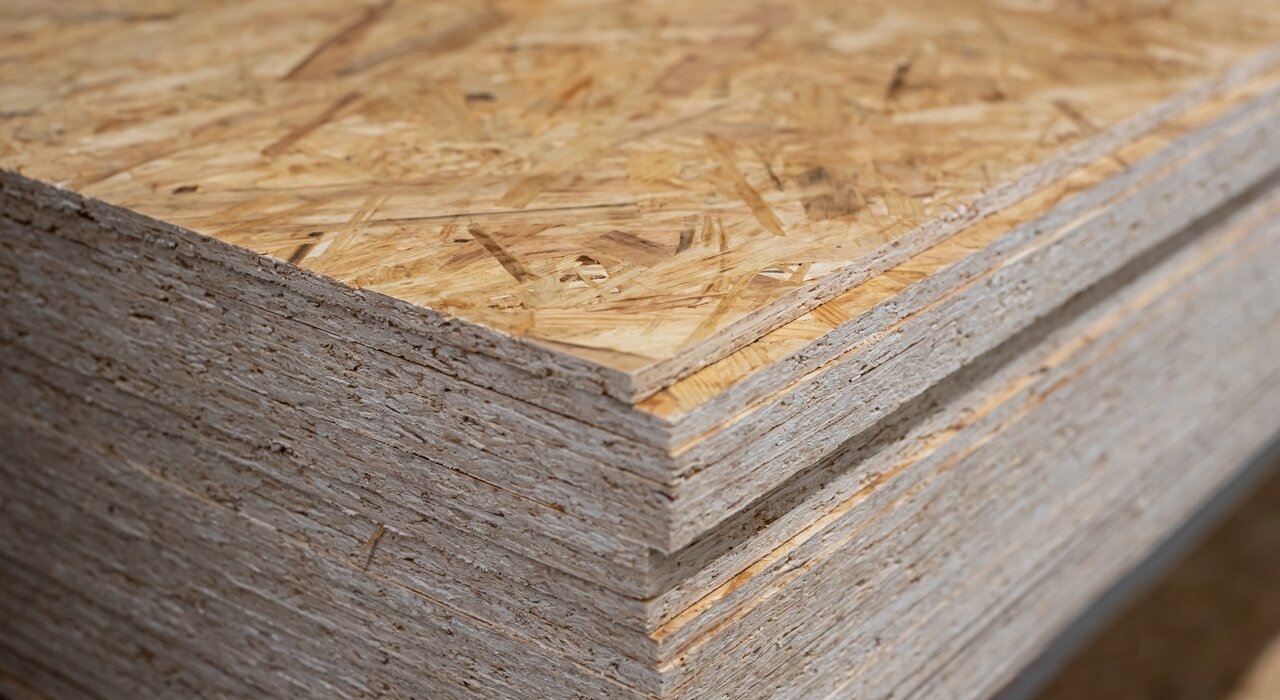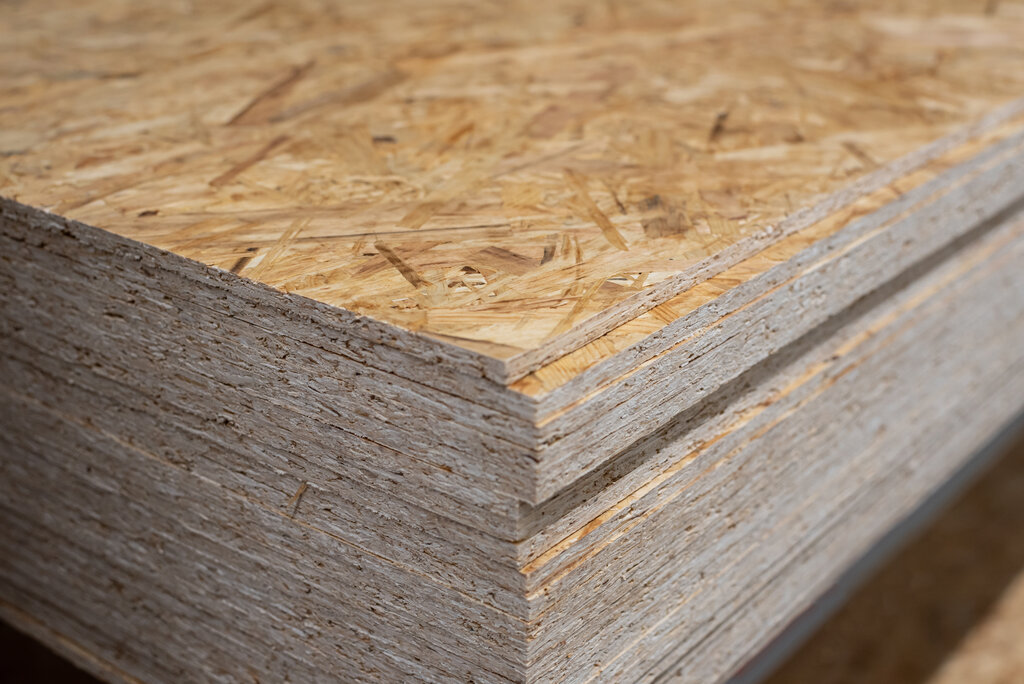
OSB vs. plywood makes for an interesting discussion in the DIY and construction community. Both materials are commonly used in various applications, from building walls and roofing to crafting furniture. Each has its unique properties, advantages, and disadvantages. Today, we ask whether OSB is better than plywood.
What is OSB?
Oriented Strand Board (OSB) is a type of engineered wood panel widely used in construction. It's made by compressing and bonding layers of wood strands in specific orientations using adhesives, typically under heat and pressure. These wood strands are usually derived from smaller, fast-growing trees, making OSB a more environmentally sustainable option compared to some traditional wood products.
Manufacturing
The process of making OSB involves three basic steps:
- Wood Strands Preparation: Wood from logs is cleaned, stripped of bark, and then cut into precise strand-like shapes. The strands are usually around 1 inch wide, 3-4 inches long, and roughly 0.08 inches thick.
- Applying Adhesives and Wax: These strands are then mixed with synthetic resins and sometimes wax, which helps enhance the moisture resistance of the final product.
- Layering and Pressing: The coated strands are layered in cross-oriented patterns, which helps to improve the panel’s strength and stiffness. They are then compressed under high heat and pressure to bond the strands together into a solid panel.
OSB panels are notable for their strength and rigidity, making them suitable for structural applications such as sheathing in walls, flooring, and roof decking. The cross-oriented arrangement of the strands gives OSB good mechanical properties and makes it a sturdy material capable of supporting considerable weight and withstanding significant stress.
Advantages
- Uniformity: Unlike natural wood, OSB's manufacturing process ensures a consistent product with no knots or voids.
- Cost-effectiveness: Generally less expensive than plywood due to the materials and processes used.
- Sustainability: Uses younger trees and can include a variety of wood species, making it a more sustainable option for large-scale use.
Limitations
- Moisture Sensitivity: While modern OSB is often treated with water-resistant resins, it can still be susceptible to moisture and swell or degrade if not properly protected.
- Aesthetics: OSB is generally not chosen for projects where the appearance of wood is important, as it doesn't have the natural grain pattern that plywood or solid wood might provide.

What is plywood?
Plywood is an engineered wood product made from three or more thin layers of wood veneer, or "plies," bonded together with an adhesive. Each layer of wood, or ply, is usually oriented with its grain running at right angles to the adjacent layer to improve the strength and reduce the possibility of the wood splitting when nailed at its edges. This cross-graining also helps to reduce the expansion and shrinkage, providing a stable and strong panel. Plywood is one of the most widely used wood products due to its versatile properties.
Manufacturing
The process of making plywood involves several key steps:
- Veneer Peeling: Logs are first softened through steaming or boiling, which makes them easier to cut. They are then mounted on a lathe and rotated against a blade to peel off thin layers of wood.
- Drying and Grading: The wood veneers are dried to remove moisture and then graded based on quality. Defects such as knots or splits are also repaired or trimmed at this stage.
- Glueing: The veneers are coated with adhesive. The type of adhesive used can vary depending on the plywood's intended use and may include urea-formaldehyde, phenolic, or melamine resins.
- Layering: The veneers are stacked in layers, with each layer's grain oriented perpendicular to the adjacent layers. The number of layers is typically odd to ensure symmetry, which enhances the panel's strength.
- Pressing: The stack of veneers is subjected to heat and pressure, which cures the adhesive and forms a solid, uniform panel.
Plywood offers excellent dimensional stability and is highly resistant to cracking, shrinking, twisting, and warping. Its high strength and stiffness-to-weight ratios make it suitable for load-bearing applications in construction, such as flooring, walls, and roofs.
Advantages
- Strength Across the Grain: Plywood is solid in both the lengthwise and widthwise directions due to its cross-grained structure.
- Surface Finish: Plywood provides a smooth surface that can be easily painted or treated with other finishes. Higher-grade plywood is often used for visible surfaces in furniture or cabinetry.
- Variability in Types and Grades: Plywood is available in various grades and types and is tailored for different uses, including exterior, interior, and marine applications.
Limitations
- Cost: Compared to OSB, plywood can be more expensive, especially higher-grade panels intended for visible applications.
- Moisture Sensitivity: While more moisture-resistant than OSB, certain types of plywood can still suffer from moisture damage if not properly treated or maintained, particularly if used in exterior applications.

Comparing OSB and plywood
OSB and plywood offer excellent strength and durability, but their performance can vary slightly depending on the conditions. OSB is generally more uniform throughout, so if there is a defect, it’s less likely to impact the overall strength of the panel. However, plywood is considered stronger along the grain than OSB. When it comes to moisture resistance, plywood has an edge. It dries faster and is less likely to swell or deform when exposed to moisture over time. OSB, however, can swell, especially at the edges, and once swollen, it does not return to its original thickness. OSB typically edges out plywood when it comes to cost. It’s usually more affordable due to the lower raw materials and production costs. This price difference can be significant, making OSB a popular choice in budget-conscious projects. Both materials are considered environmentally friendly, but OSB is produced using smaller-diameter trees and can incorporate more varied wood species, including fast-growing and less valuable species. This often makes OSB slightly more sustainable than plywood, which relies on larger, older trees. Plywood is often preferred for projects where aesthetics are important, such as furniture or cabinetry. It’s also easier to paint and finish. Additionally, plywood is available in various grades, making it suitable for various applications, from general construction to decorative projects.
So, is OSB better than plywood?
Whether OSB is better than plywood doesn’t have a one-size-fits-all answer. It largely depends on the specific requirements of your project, including budget, environmental conditions, and aesthetic considerations. OSB may be better for structural projects where cost and sustainability are paramount. However, plywood could be used for projects requiring high moisture resistance or a fine finish.
